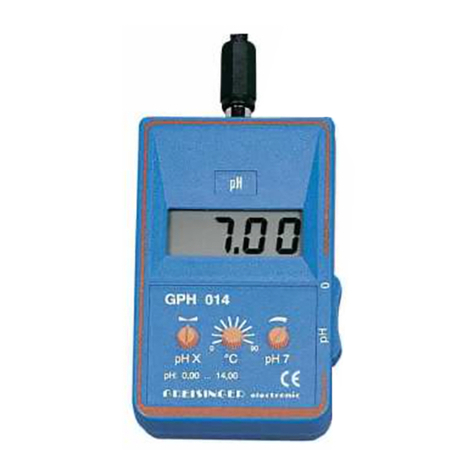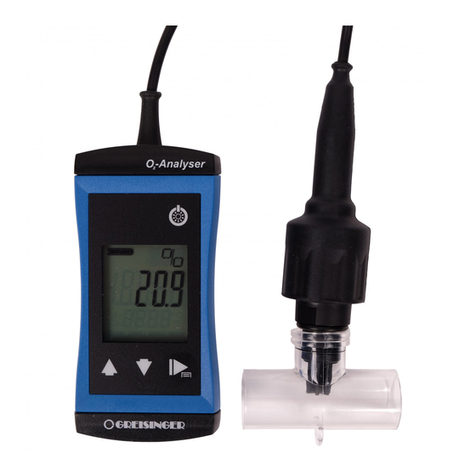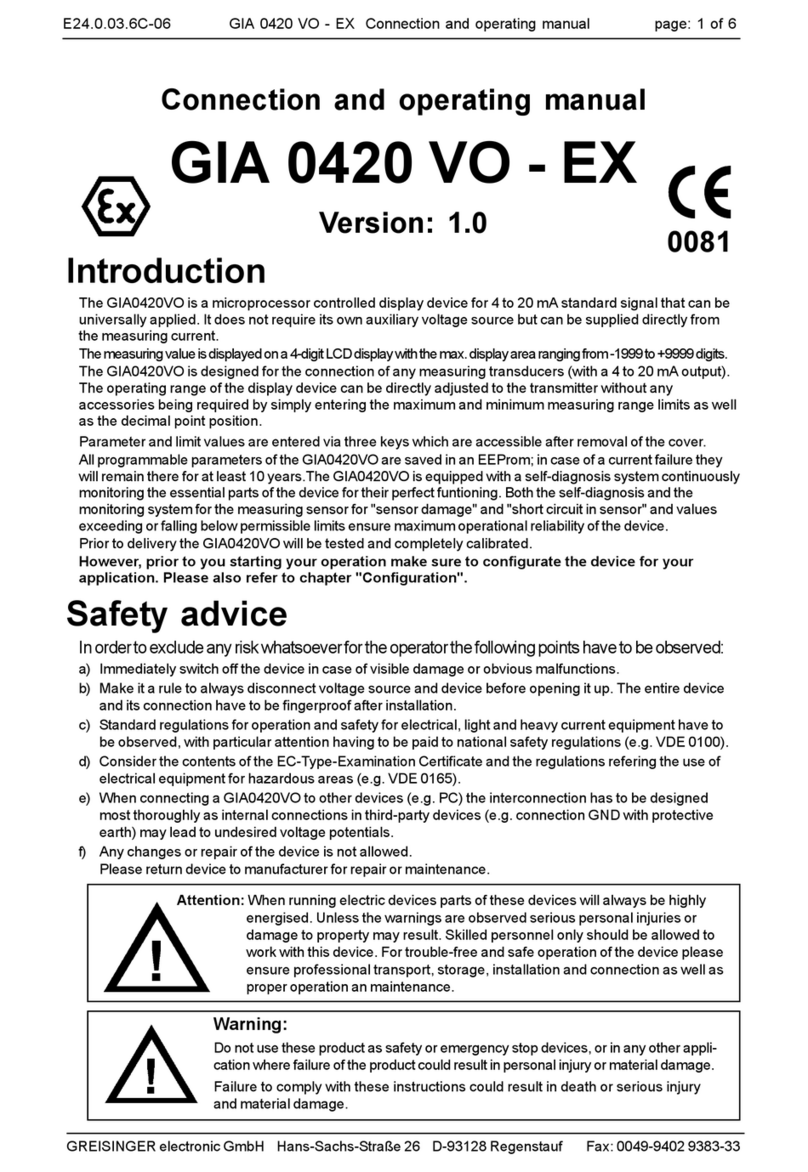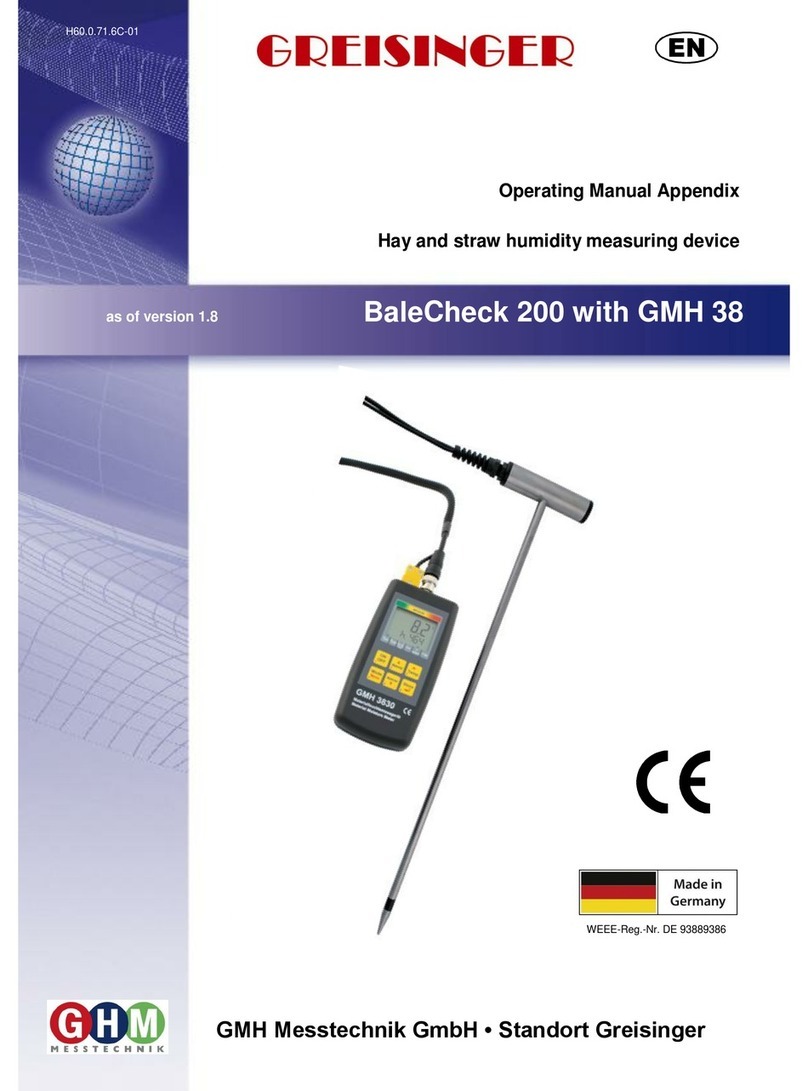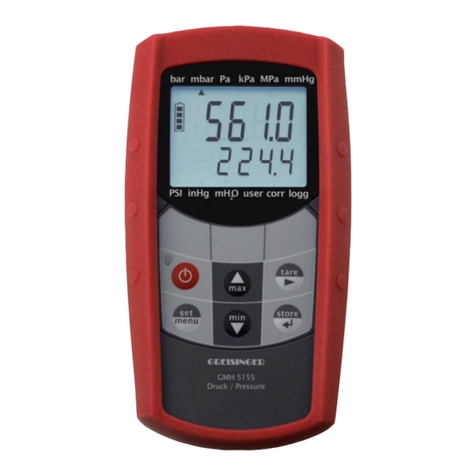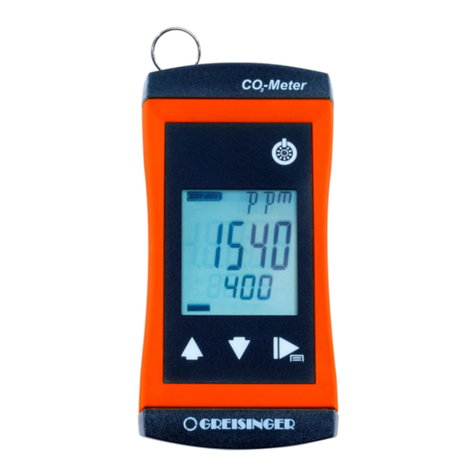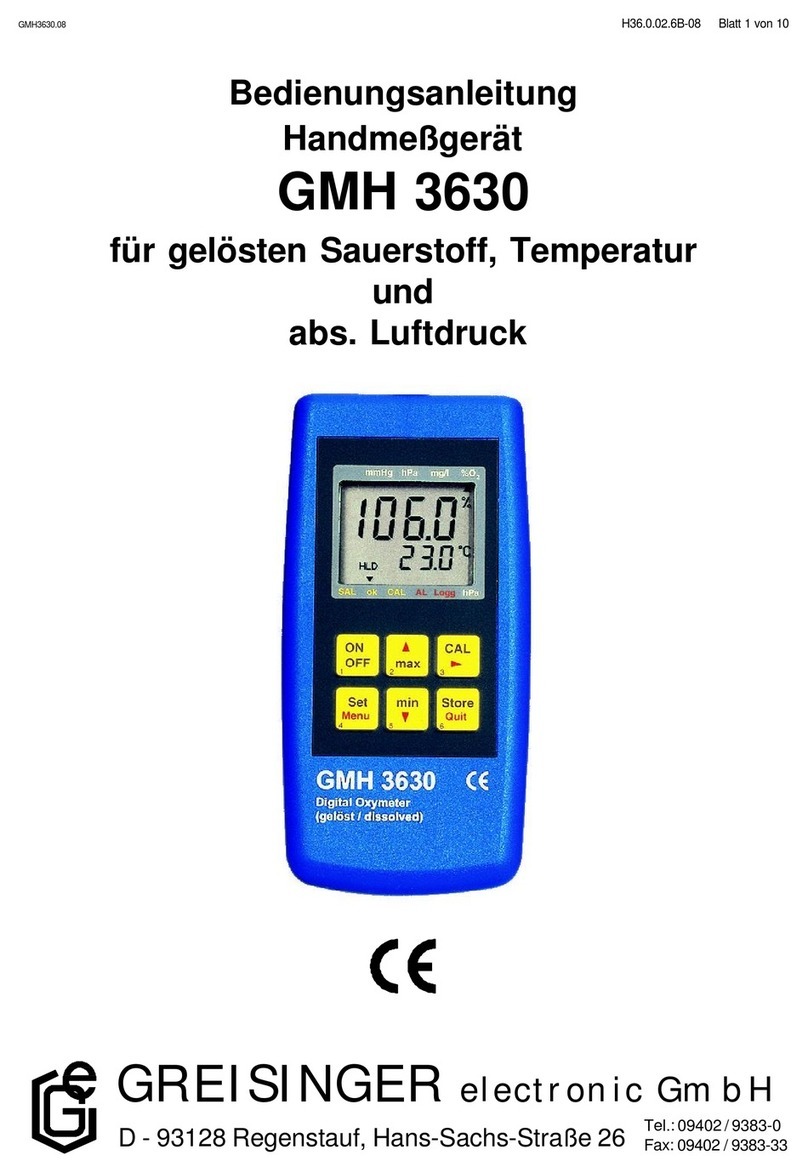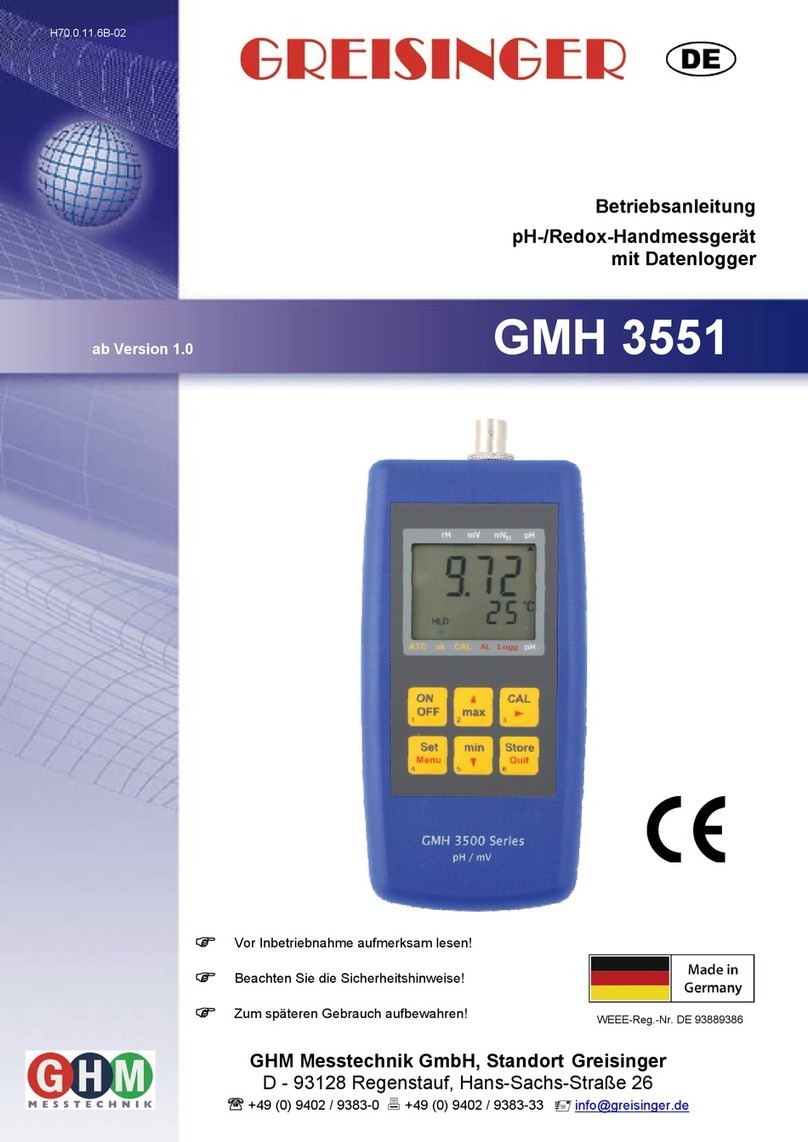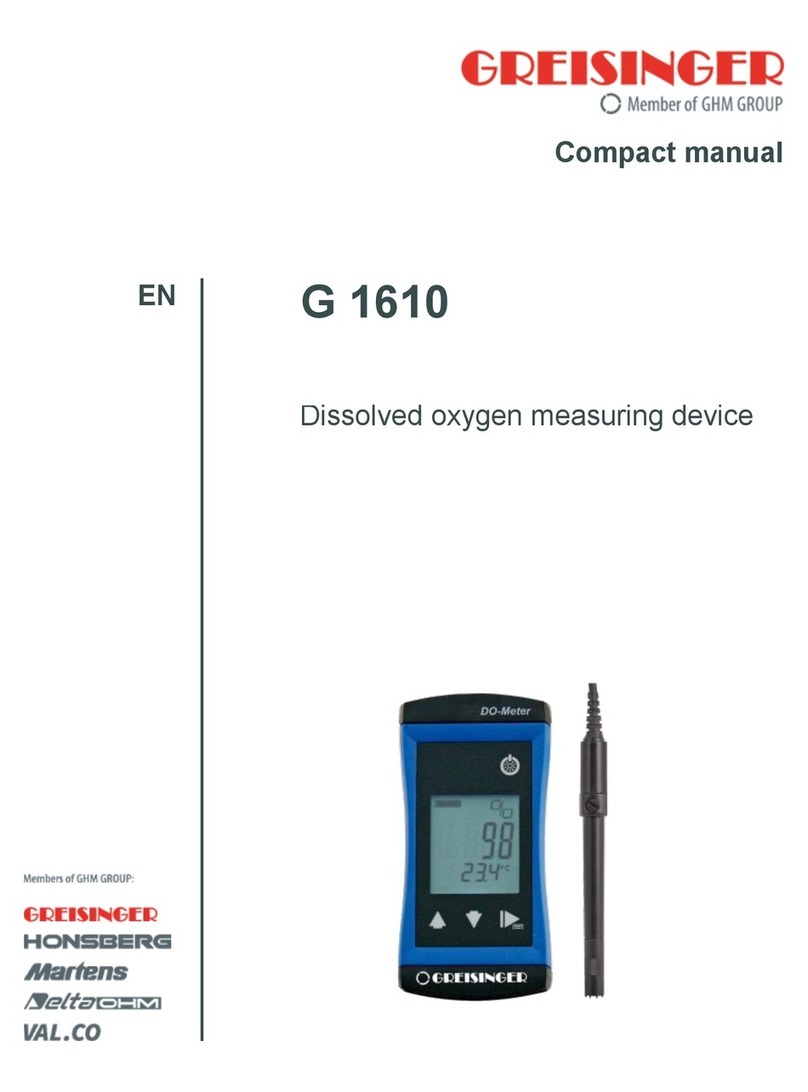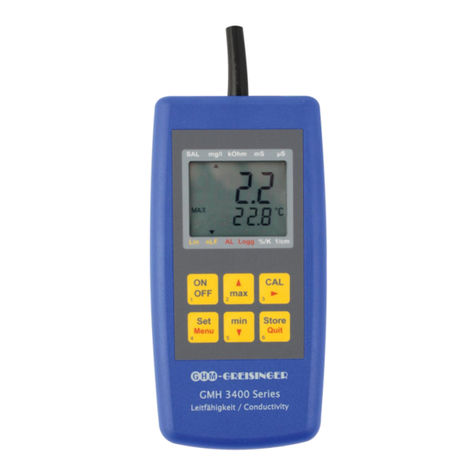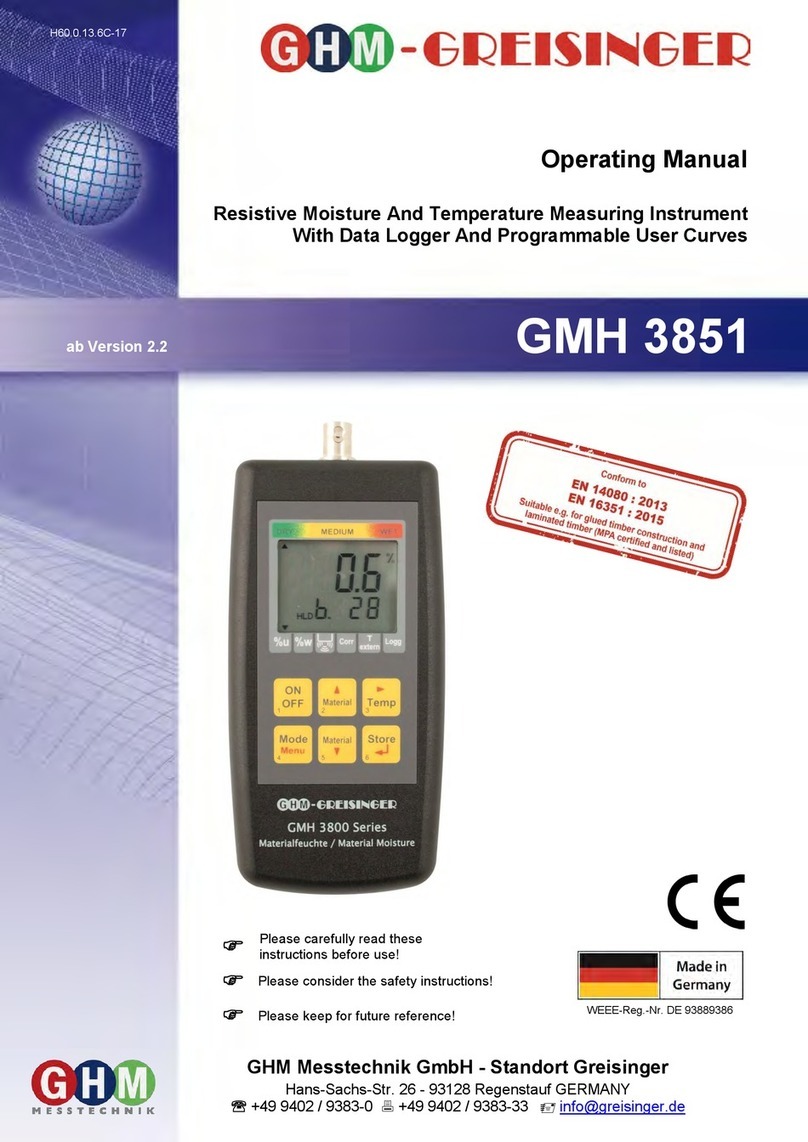H84.01.6B-04 Betriebsanleitung GMH 5630 Seite 2 von 20
_____________________________________________________ _____________________________________________________________________________
GHM GROUP –Greisinger | GHM Messtechnik GmbH
Hans-Sachs-Str. 26 | 93128 Regenstauf | GERMANY
Phone +49 9402 9383-0 | Fax +49 9402 9383-33
1SAFETY......................................................................................................................................................................3
1.1 GENERAL NOTE.....................................................................................................................................................3
1.2 INTENDED USE.......................................................................................................................................................3
1.3 QUALIFIED STAFF ..................................................................................................................................................3
1.4 SAFETY SIGNS AND SYMBOLS................................................................................................................................3
1.5 REASONABLY FORESEEABLE MISUSE ....................................................................................................................4
1.6 SAFETY GUIDELINES..............................................................................................................................................4
2PRODUCT DESCRIPTION......................................................................................................................................5
2.1 SCOPE OF SUPPLY ..................................................................................................................................................5
2.2 OPERATION AND MAINTENANCE ADVICE..............................................................................................................5
3START OF OPERATION.........................................................................................................................................6
4OPERATION..............................................................................................................................................................6
4.1 DISPLAY ELEMENTS...............................................................................................................................................6
4.2 PUSHBUTTONS.......................................................................................................................................................7
4.3 CONNECTIONS .......................................................................................................................................................7
4.4 POP-UP CLIP...........................................................................................................................................................7
5CONFIGURATION...................................................................................................................................................9
6THE OXYGEN SENSOR........................................................................................................................................10
6.1 DESIGN OF SENSOR GWO 5610...........................................................................................................................10
6.2 FIRST START OF OPERATION /FILLING OF SENSOR GWO 5610 ...........................................................................12
6.3 SENSOR MAINTENANCE OF SENSOR GWO 5610..................................................................................................13
7DISSOLVED OXYGEN MEASURING - PLEASE NOTE..................................................................................13
7.1 CORRECTION OF SALINITY 'SAL' ........................................................................................................................14
7.2 AMBIENT PRESSURE AND MEASURING DEPTH OF THE SENSOR............................................................................14
8KALIBRIERUNG DES SAUERSTOFFSENSORS..............................................................................................14
8.1 CALIBRATION ......................................................................................................................................................14
8.2 EVALUATION OF SENSOR STATE „ELE[“.............................................................................................................15
8.3 CALIBRATION INTERVAL ([.INT) ..........................................................................................................................15
9UNIVERSAL OUTPUT...........................................................................................................................................15
10 ADJUSTMENT OF TEMPERATURE INPUT.................................................................................................17
11 INSPECTION OF THE ACCURACY / ADJUSTMENT SERVICES............................................................17
12 BATTERY CHANGE...........................................................................................................................................17
13 ERROR AND SYSTEM MESSAGES................................................................................................................18
14 RESHIPMENT AND DISPOSAL.......................................................................................................................19
14.1 RESHIPMENT ....................................................................................................................................................19
14.2 DISPOSAL.........................................................................................................................................................19
15 SPECIFICATION.................................................................................................................................................20
